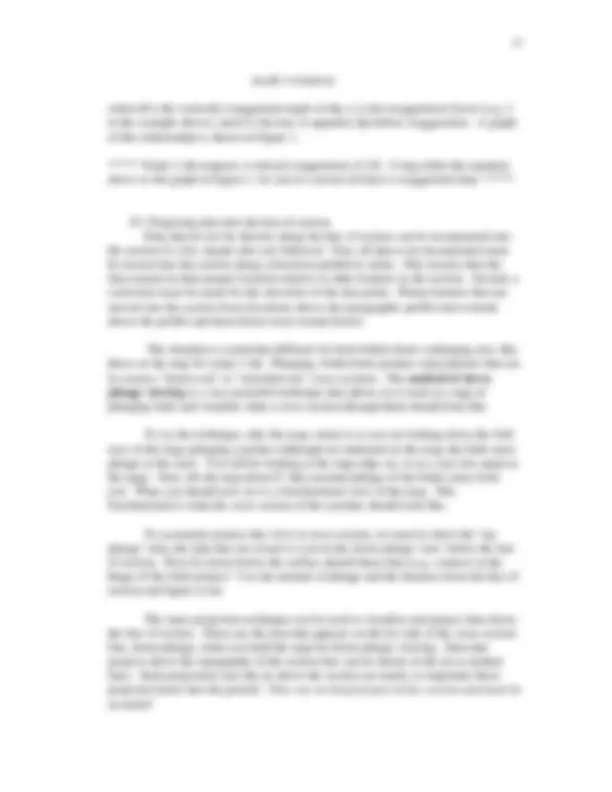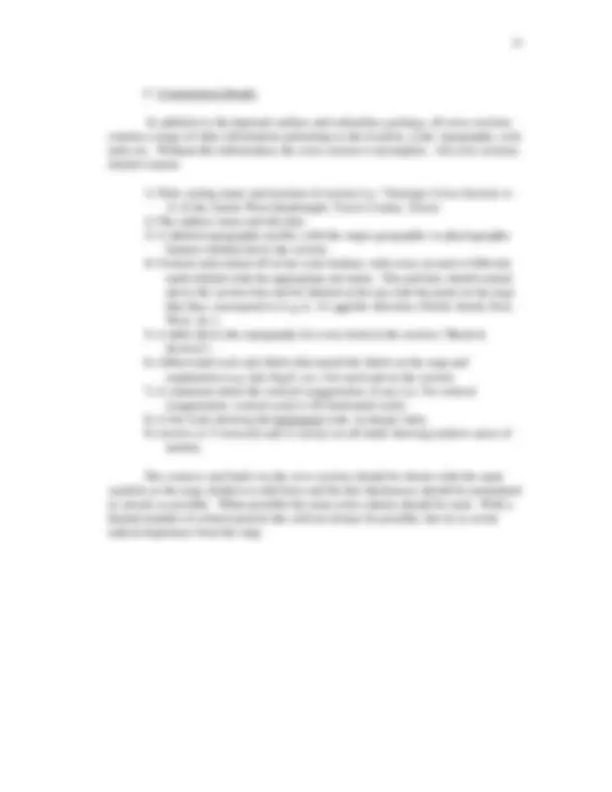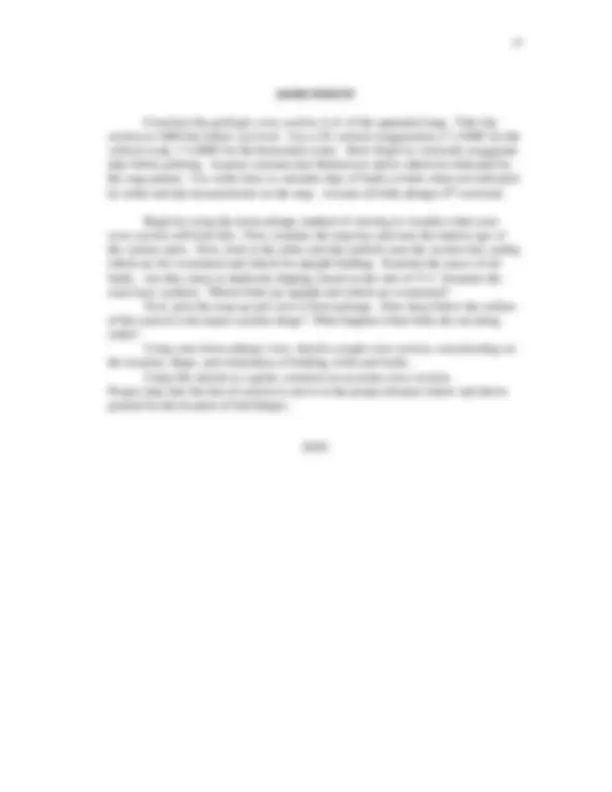





Study with the several resources on Docsity

Earn points by helping other students or get them with a premium plan


Prepare for your exams
Study with the several resources on Docsity

Earn points to download
Earn points by helping other students or get them with a premium plan
Community
Ask the community for help and clear up your study doubts
Discover the best universities in your country according to Docsity users
Free resources
Download our free guides on studying techniques, anxiety management strategies, and thesis advice from Docsity tutors
A cross section ideally clarifies geometric and geologic age relationships that may be difficult or impossible to visualize solely from inspection of a ...
Typology: Slides
1 / 5

This page cannot be seen from the preview
Don't miss anything!




M. Helper, ‘
Lab 12: CONSTRUCTING GEOLOGIC CROSS SECTIONS
Geologic cross sections are vertical slices through the earth that depict the surface and subsurface geology along chosen lines of section. A cross section ideally clarifies geometric and geologic age relationships that may be difficult or impossible to visualize solely from inspection of a geologic map. Accurate extrapolation of the surface geology to depth along a line of cross section is often the only rigorous way to predict the subsurface geology of a region, and thus is an important tool that all geologists must master. Today’s lab deals with the mechanics of projecting surface geologic data into the subsurface and cross section construction.
A. Selecting lines of section Choosing a cross section line involves considerations and trade-offs among two important factors. First, one would ideally like to have good control on bed thicknesses and the location and attitudes of bedding contacts, faults, fold axes, unconformities, etc. along the entire length of the section. Unless data were collected during mapping with the cross section in mind, this ideal is rarely met. One usually has to project at least some data that is off the line of section into the cross section. There are rigorous means to do this, some of which are described below. Second, the cross section should show as much information as possible about the relative ages and geometries of the units and structures in the area. This can usually be achieved by selecting lines of section that are perpendicular or at a high angle to the regional strike of bedding, major faults or fold axes.
For either or both of these considerations to be met it is sometimes necessary to put bends or offsets in sections. Where possible, these should be placed in the areas of least complexity in order to maintain as much visual continuity as possible within the cross section. Offsetting of a section line should be done only parallel to the strike of the bedding or other feature at the point of offset.
******The preselected cross section line for today’s lab nicely meets both criteria. It is perpendicular to the strike of bedding, fold axial traces, and faults, and includes all map units and structures.*****
B. Projection Techniques I. Basic assumptions Lacking subsurface or surface control that indicate otherwise, two assumptions are commonly made when projecting surface data to depth. They are: 1) Bed thicknesses remain constant ; 2) Strike and dip angles do not change with depth. Over small areas and shallow depths these assumptions may be valid; over larger areas and greater depths, and in folded regions, they aren't.
Both assumptions should be tested whenever possible by examining map relations in areas away from the section line; e.g. does the map show evidence that a unit thins or thickens along strike? or is there evidence that strike and dip change with elevation or location with respect to a fold or fault?
******For the cross section in today’s lab we will assume constant bed thicknesses in order to constrain location of unit contacts with depth, but we will not be able to assume constant strike and dip with depth. The map pattern clearly shows evidence of several folds, which must affect the dip of units at depth. Strike and dip data around the folds, even if far from the line of cross section, can be projected into the line of cross section to derive dip angles at depth, as explained below.*******
II. Apparent Dips True dip is the angle of dip perpendicular to strike; dip angles in all other orientations are apparent dips and must always be less than the true dip. It follows that in any cross section or part of a cross section that is not perpendicular to strike, the dip of planes in the cross section must be show as apparent rather than true dips. Apparent dips range from 0o for strikes parallel to the line of section, to the true dip for strikes perpendicular to the line of section. The equation that relates true dip to apparent dip for any plane striking at an angle to the line of cross section is:
tan a = (tan b )(cos c )
where angle a is the apparent dip, angle b is the true dip, and angle c is the angle between the true dip direction and the apparent dip direction.
******For today’s lab, it will not be necessary to calculate any apparent dips for the data that lie along the line of section; the line of cross section is, for all practical purposes, perpendicular to the strike of bedding and faults. However, for data that you wish to project into the line of section from off the cross section line, it may be neccessary to calculate apparent dips. Such data can be used, for example, to arrive at the precise shape of the fold hinges at depth. ******
III. Vertical Exaggeration, dip angles and thicknesses It is often necessary to expand the vertical scale of a cross section relative to the horizontal scale in order to show thin beds or small features that might otherwise be impossible to represent. This vertical exaggeration is accomplished by simply choosing a vertical scale that is larger than the horizontal (map) scale. For example, for a map with a scale of 1 inch equal to 1000 feet, a cross section that has a vertical exaggeration of 2X will have a vertical scale of 1 inch equal to 500 feet.
Vertically exaggerating a cross section correctly not only requires expanding the unit thicknesses but also increasing the dip angles. A vertically exaggerated dip can be calculated by the simple formula:
C. Construction Details
In addition to the depicted surface and subsurface geology, all cross sections contain a range of other information pertaining to the location, scale, topography, rock units etc. Without this information, the cross section is incomplete. All cross sections should contain:
The contacts and faults on the cross section should be shown with the same symbols as the map; dashed or solid lines and the line thicknesses should be maintained as closely as possible. When possible the same color scheme should be used. With a limited number of colored pencils this will not always be possible, but try to avoid radical departures from the map.
Construct the geologic cross section A-A' of the appended map. Take the section to 1000 feet below sea level. Use a 2X vertical exaggeration (1"=1000' for the vertical scale, 1"=2000' for the horizontal scale). Don't forget to vertically exaggerate dips before plotting. Assume constant unit thicknesses unless otherwise indicated by the map pattern. Use strike lines to calculate dips of faults or beds when not indicated by strike and dip measurements on the map. Assume all folds plunges 8o eastward.
Begin by using the down plunge method of viewing to visualize what your cross section will look like. First, examine the map key and note the relative age of the various units. Next, look at the strike and dip symbols near the section line, noting which are for overturned and which for upright bedding. Examine the traces of all faults. Are they steep or shallowly dipping, based on the rule of V's? Examine the axial trace symbols. Which folds are upright and which are overturned? Now, pick the map up and view it down-plunge. How deep below the surface of the section is the major syncline hinge? What happens when folds die out along strike? Using your down-plunge view, sketch a rough cross section, concentrating on the location, shape, and orientation of bedding, folds and faults. Using this sketch as a guide, construct an accurate cross section. Project data into the line of section to arrive at the proper distance below and above ground for the location of fold hinges.